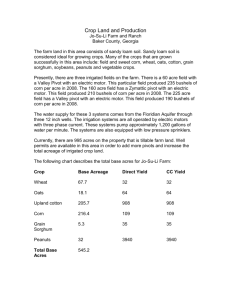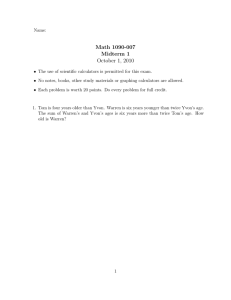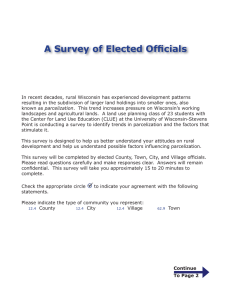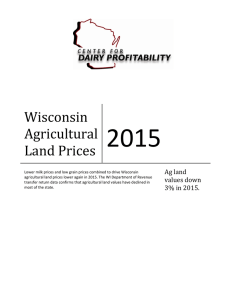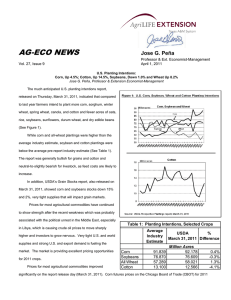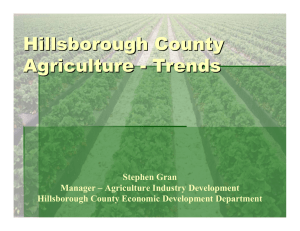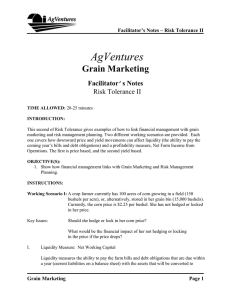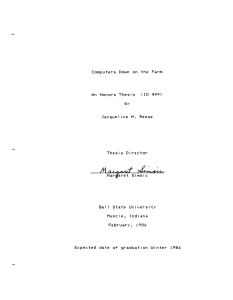AG-ECO NEWS Jose G. Peña
advertisement
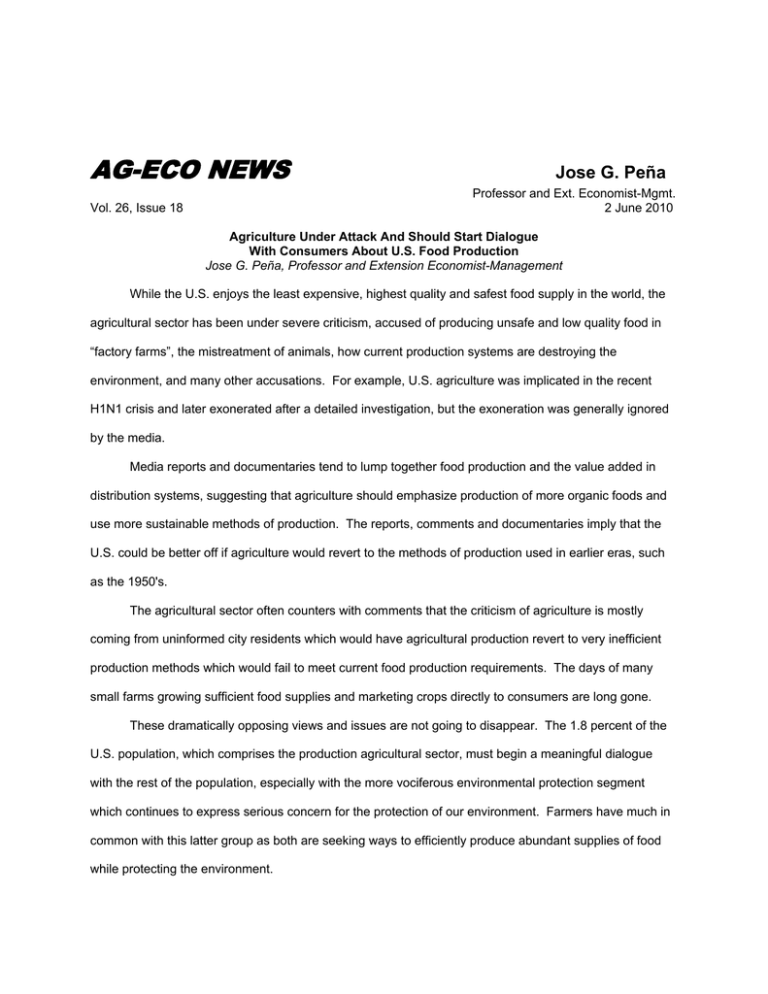
AG-ECO NEWS Jose G. Peña Professor and Ext. Economist-Mgmt. 2 June 2010 Vol. 26, Issue 18 Agriculture Under Attack And Should Start Dialogue With Consumers About U.S. Food Production Jose G. Peña, Professor and Extension Economist-Management While the U.S. enjoys the least expensive, highest quality and safest food supply in the world, the agricultural sector has been under severe criticism, accused of producing unsafe and low quality food in “factory farms”, the mistreatment of animals, how current production systems are destroying the environment, and many other accusations. For example, U.S. agriculture was implicated in the recent H1N1 crisis and later exonerated after a detailed investigation, but the exoneration was generally ignored by the media. Media reports and documentaries tend to lump together food production and the value added in distribution systems, suggesting that agriculture should emphasize production of more organic foods and use more sustainable methods of production. The reports, comments and documentaries imply that the U.S. could be better off if agriculture would revert to the methods of production used in earlier eras, such as the 1950's. The agricultural sector often counters with comments that the criticism of agriculture is mostly coming from uninformed city residents which would have agricultural production revert to very inefficient production methods which would fail to meet current food production requirements. The days of many small farms growing sufficient food supplies and marketing crops directly to consumers are long gone. These dramatically opposing views and issues are not going to disappear. The 1.8 percent of the U.S. population, which comprises the production agricultural sector, must begin a meaningful dialogue with the rest of the population, especially with the more vociferous environmental protection segment which continues to express serious concern for the protection of our environment. Farmers have much in common with this latter group as both are seeking ways to efficiently produce abundant supplies of food while protecting the environment. We need to ask ourselves, what would happen if U.S. agricultural production would return to the levels and methods of production of the mid-50’s? Agriculture supports’ organic farming and any other alternative production system to satisfy consumer preferences. But, a major change to alternative production systems would significantly reduce agriculture’s ability to produce food. During the last 60 years, U.S. agriculture has dramatically increased production efficiency, transforming through evolving production cycles, from industrialization at the turn of the last century, a chemical cycle in the 60’s to the technological revolution currently underway. This high tech evolution which includes the use of genetically modified organisms (GMOS), use of high tech information systems, the use of crop consultants to frequently monitor/adjust production systems, biological control, IPM and many other technical activities, continue to increase production efficiency and guarantee abundant supplies of healthy food at very inexpensive costs to the consumer. One mechanized farmer in the 1950's could feed about 27 people compared to today's farmer which can feed about 155 people. (See Figure 1) TABLE 1. Comparison of Selected Items 1954 to 2009 The U.S. population in the mid-50’s at 163 million inhabitants has close to doubled to 307 million in 2009 (See Table 1). Reverting to production systems of the mid50’s would create food shortages and increase prices dramatically. Agriculture had to rise to the occasion to feed a growing population. Corn forms the base for our food system. During the last 55 years, U.S. corn production efficiency, for example, has U.S. population mid-year (million) Certain Crop Statistics Corn for grain ($/bu.) Acres harvested (million ac.) Production (million bushels) Yield per acre (bu./ac.) Cotton (4/lb.) Acres harvested (million ac.) Production (million bales) Yield per acre (lbs./ac.) Wheat ($/bu.) Acres harvested (million ac.) Production (million bushels) Yield per acre (bu./ac.) Total Expenditures for foodo (% of disposable income) 1 1954 2009 163.0 307.2 Percent Change 88.4% 1.4 80.2 2,708.0 39.4 33.6 19.3 13.7 341.0 2.1 54.4 984.0 18.1 3.7 81.8 13,370.0 163.5 67.0 9.8 16.7 815.0 4.6 47.1 2,043.0 43.4 158.7% 2.0% 393.7% 315.0% 99.3% -49.2% 21.9% 139.0% 117.0% -13.4% 107.6% 139.8% 19.6 9.6 -51.0% For 2008 and includes cost of food at home and away from home Source: U.S. Census of Agriculture, various issues, USDA/NASS data website, USDA/NASS Crop Production, Historical Track Records and Prices Paid by Farmers for Commodities and Services, United increased close to 400 percent, basically from increased yield per acre from about the same number of acres producing corn as in the mid-50’s. Currently, the US population spends about 9.6 percent of their disposable income to pay for food at home and away from home. This is the least amount of yearly income spent on food than any country in the world. How many people could not afford milk if the price increased to $10/gallon? How would consumer spending change if about 20 percent of disposable income was spent just to cover food? Inexpensive food has made possible the economic prosperity enjoyed by the U.S. population. Quality production of specialized foods is more expensive than production of the basic staples such as corn. U.S. agriculture supports the production of organic foods, poultry, eggs from free range chickens, grass fed beef production, etc. But, agriculture’s first obligation remains to provide plentiful supplies of healthy, high quality, inexpensive food. Please note that feeding a hungry world will be a residual benefit of rapidly evolving U.S. food production systems. Appreciation is expressed to Drs. Carl Anderson and Mark Black for their contribution to and review of this article.
